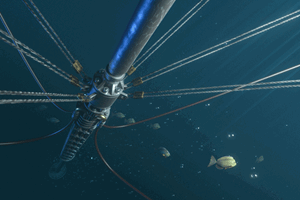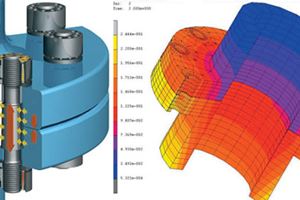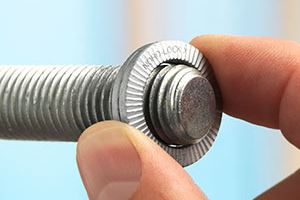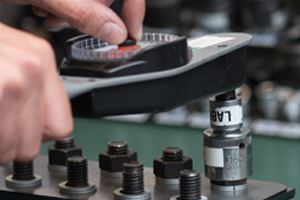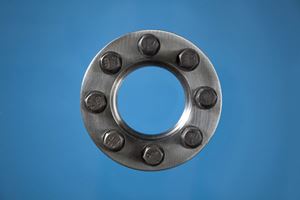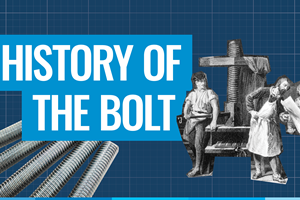Coupling Challenges & the Evolution
Couplings can be found in many critical applications and represent one of the most challenging bolted joints to secure. And as machines continue to become bigger and more powerful, the demands on couplings become even greater.
Couplings are as old as industrialization itself with even early simple machines, such as cotton mills and windmills, needing some way of connecting shafts. However, ever since the invention of the steam turbine back in 1884, shaft couplings have become essential in the power generation and shipping industries. As both turbines and shipping vessels have increased in size, so too has the amount of power and torque that needs to be transmitted. This, in turn, has greatly increased the demands on shafts and couplings, and in the case of bolted couplings, on the bolts themselves.
“In the power generation and marine industries, couplings have always been there and they really haven’t evolved much,” says Martin Walsh, an engineer with over 30 years of experience working with large-scale bolted couplings. “If you look at a coupling from 60-70 years ago, it is pretty much the same design and concept as today. However, the engineering behind them has evolved a lot. Bolts, in particular, is an area where couplings have become a lot more sophisticated and this has allowed smaller couplings to transmit more torque.”
One of the most important functions of a bolted coupling is to maintain shaft alignment. In marine applications, where shafts typically turn at low speed, any misalignment will cause vibration, which in turn puts unnecessary loading on the bearings. In power generation applications, where rotation can be as high as 3,600 rpm, even the slightest vibration or uneven loading is unacceptable and would severely limit the turbine’s ability to run at full power. For this reason, a lot of time and resources are invested in optimizing shaft alignment.
“Once you’ve achieved the alignment, then the bolts need to hold it as it was set and maintain that alignment in service,” says Walsh. “At some point in the future, you will take those bolts out and disconnect the shaft. When you put it back together, you want it back to exactly where it was before because you’ve already invested a lot in getting the alignment right.”
For many years the most common bolting solution was standard through bolts, which are relatively cheap and readily available. A bolt is simply inserted through the bore and tightened with nuts on either end to create a friction connection. But the amount of torque that can be transmitted through friction is severely limited and excessive torque can lead to slippage and misalignment. The resulting micro-movements and uneven loading can then lead to damaged bolts and bores. The coupling, therefore, needs to be rebuilt and shaft alignment re-established.
In theory, fitted bolts, which fill the bore, can offer greater torque capacity, since torque is then driven through direct shear across the cross-section of the bolt. In practice it is difficult to achieve a truly fitted bolt since the bolt’s diameter will reduce as it is tightened. This creates a gap between the bolt and the bore, leading to the same problems of slippage and bolt failure.
This need to establish and maintain shaft alignment, even after a coupling has been dissembled and reassembled again, has led to the increased use of expanding sleeve bolts. Since expanding sleeve bolts expand into the bore, they can ensure a truly fitted bolt and a far more even load distribution. This eliminates movement and slippage, so that shaft alignment should automatically be re-established once the expanding sleeve bolts are reinstalled.
“The expanding sleeve bolt has probably been the biggest single advance in accuracy over the past 30 years,” says Steve Brown, Global Product Manager – Expansion Bolts, Nord-Lock Group. “They offer many pros and little in the way of cons – ease of installation, the accuracy of fit, ease of removal, regaining of alignment and with correctly prepared holes, regaining of concentricity and re-usability.”
A key factor driving the development of bolted couplings has been the evolution in engineering analysis. “70-80 years ago, couplings and bolts were over-engineered and bigger than they needed to be, as engineers erred on the side of caution,” says Walsh. “It was a situation that existed in many industries because the ability to do sophisticated calculations and simulations was not available.”
Now many OEMs have the ability to test the effects of temperature, different materials and operation conditions using computer modeling and simulations. Due to the complexity of rotating couplings, the finite element method (FEM) is becoming increasingly common for identifying weak points and torque tolerance of specific installations. Shear tests have also been used successfully to demonstrate the physical limitations of different bolting solutions.
“There is still scope for further analysis and it would be helpful to see exactly how the newer design of bolts with expanding sleeves compare to the older bolts when it comes to transmitting higher torque,” adds Walsh. “Having a full FE analysis could be a significant advantage since it shows the potential for reducing the number of bolts and size of the coupling, particularly in industries such as wind turbines, where they tend to avoid bolted couplings due to space restrictions.”
The need to design smarter and smaller couplings will continue to be important as turbines and shipping vessels keep on growing in size and output, and need to transmit even more torque.
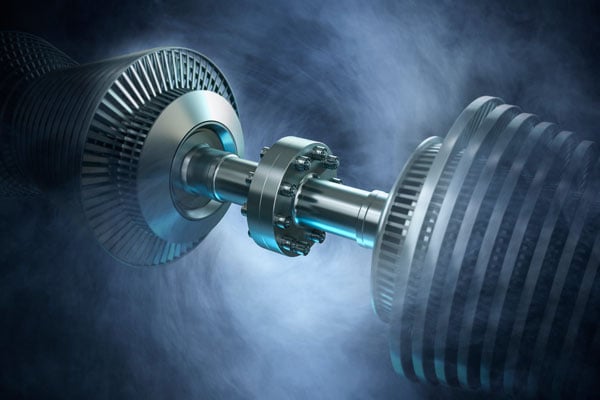
C.A. Parsons ”Turbinia”
In 1884, British engineer Sir Charles Algernon Parsons invented the first steam turbine.
His first model only generated 7.5 kW of electricity, but it demonstrated the huge potential for generating electricity and for powering ships. In 1893, the Parsons Marine Steam Turbine Company was set up and in order to demonstrate the capabilities of the new technology, began developing the experiential vessel Turbinia.
The new ship was equipped with three axial-flow turbines fitted to three shafts, with each shaft driving three propellers. On completion in 1894, the Turbinia was the fastest ship in the world reaching speeds of up to 34 knots (63 km/h) – in comparison, the Royal Navy’s fastest vessels could only reach 27 knots.
In 1897, the Turbinia turned up unannounced to the Navy Review for Queen Victoria’s Diamond Jubilee, and in front of royalty and senior Navy figures, it was able to clearly demonstrate its superiority in speed and power. Within two years, Parson’s turbines were adopted by the Royal Navy and shortly afterward used to power transatlantic passenger ships.
Sir Charles Algernon Parsons’ designs also saw steam turbines quickly scaled up, making it possible to generate cheap and plentiful electricity. In 1899 the first megawatt turbine was built in a power generation plant in Germany, and within Parsons’ lifetime, his invention was adopted by all major power stations in the world.
Let's Stick Together
The need to assemble components in bolted joints goes way back. For long the through bolt was the standard threaded fastener. It is inserted through the bore and tightened with nuts on either end to create a friction connection. Excessive torque may lead to slippage and misalignment, which in turn can lead to damaged bolts and bores.
The expanding sleeve coupling bolt is a more recent invention, which overcomes these problems. It expands into the bore and ensures a truly fitted bolt along with more even load distribution. It also simplifies installation and removal as well as retrofitting.

Expanding sleeve coupling bolts ensure a truly fitted bolt.
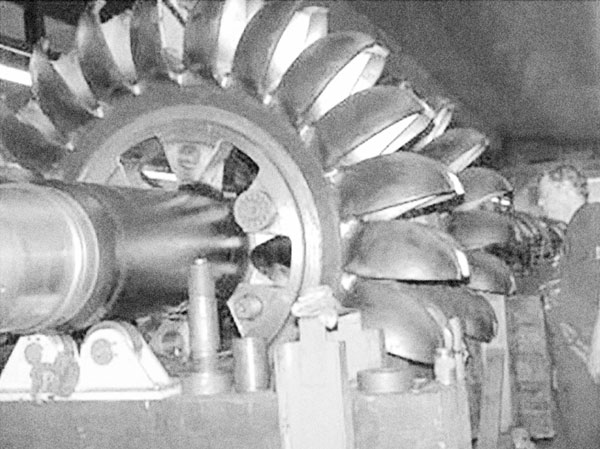
Choosing the right bolts for hydropower turbine shaft lines can significantly reduce stress concentrations and micromovements.
